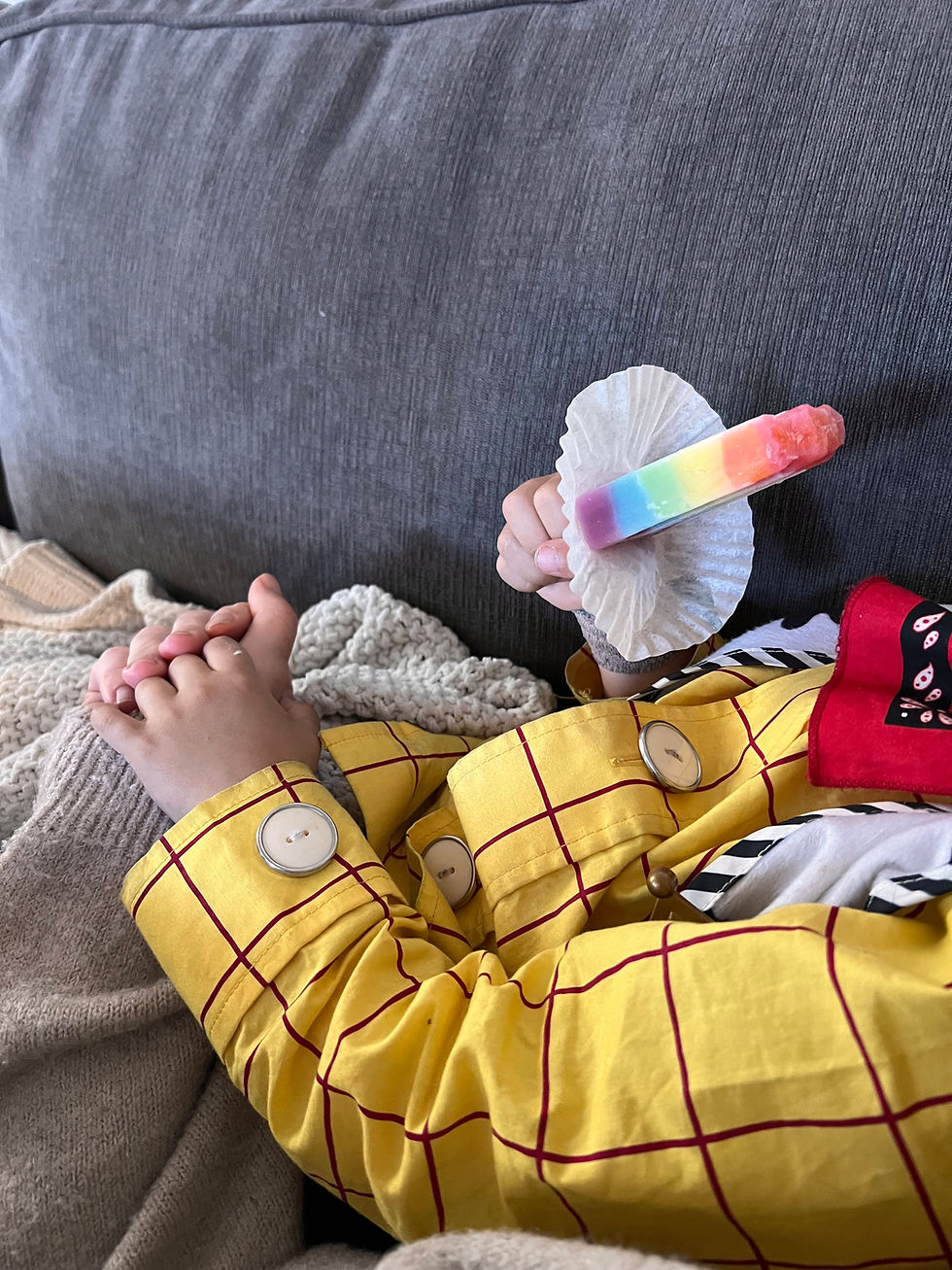What I Wish My Parents Knew: Understanding Toddler Behavior Through Connection
- Danielle Giarratano

- Oct 17
- 4 min read
By Danielle — Speech-Language Pathologist & Toddler Mom

Some mornings I forget my toddler isn’t trying to give me a hard time — they’re just having a hard time. When you slow down and look beneath the crying, the refusal, and the mess, you’ll see a child who is learning how to feel, how to ask for help, and how to use the first pieces of language. As a mom and an SLP, I want to help other parents hear what’s going on beneath the surface — and respond in ways that teach language, regulation, and trust.
Toddlers don’t act out — they act from what they know
At 18 months and even at three years, a child’s behavior is less about willful disobedience and more about development. Areas of the brain involved in impulse control, emotional regulation, and executive function are still under construction for many years. That means a toddler who can run, point, and name a few things may still struggle to “listen the first time,” stay seated at the table, or stop crying when asked.
This isn’t failure. It’s a stage. And the response that matters most isn’t correction — it’s connection.
Connection is the shortcut to regulation (and language)
When a child is dysregulated — frantic, crying, clinging, or shutting down — their body is telling them the same thing it always does: “I need safety.” For toddlers, safety looks like closeness, predictable routines, and an adult who feels calm and available. That calm adult becomes a co-regulator: someone whose presence and tone help the child return to a state where learning (including language learning) can happen.
Play is the child’s language. When you approach a request or expectation through play, you create a bridge between their emotional state and your desired outcome. Instead of demanding “sit down,” you might say, “Captain, steer the ship carefully to the dinner port” and suddenly the task becomes understandable and even fun.
Practical, SLP-friendly strategies you can use today
Below are simple, quick tools to use in real life, things you can do in the middle of a meltdown or plan into your everyday routine to prevent big meltdowns.
1. Get low and label
Kneel to their level. Name what you see in one or two words:
“Big feelings.” “So upset.” “You want the blue cup.”
Labeling helps children start to link sensations and emotions to words, an essential step in building expressive language and self-regulation.
2. Offer connection before correction
If a child is frantic, reach for proximity and calm voice first. Try:
“I’m here. You’re safe.”Give a hug or hold hands if they accept it. Once they’re calmer (even a tiny bit), you can move to teaching a new behavior.
3. Use playful scaffolding
Turn instructions into short, playful scripts:
Instead of “Sit at the table,” Try: “Our little ship needs its captain to sit so dinner doesn’t spill.”
Instead of “Use your words,” Narrate: “You want the red cup, ‘red cup’!”
Play lowers emotional intensity and gives language a natural, meaningful context.
4. Teach micro-choices
Meet power struggles with tiny choices to build autonomy:
“Do you want the blue cup or the green cup?”Small choices reduce defiance and increase cooperation.
5. Keep short, consistent routines
Predictability is regulation. Clear, short sequences help toddlers know what’s coming and reduce surprise:
“5 minutes of play, then wash hands, then dinner.”Visual timers or simple songs (e.g., a hand-washing song) create rhythm and predictability.
6. Model language — not lectures
Rather than telling a child to “calm down,” show calm language:
“Take a deep breath. In… and out.”Narrate your own calm behavior so they have a model to imitate.
Words to try next time — practical scripts
Here are a few short scripts you can use immediately:
“I see big feelings. I’m here.”
“You want more.” Then model "more..." fill in the blank with what they want.
“Captain, steer slowly.” (When transitioning to dinner or a seat)
“Two more minutes, then we choose a book.”
“You’re safe. I’ll help you breathe.”
Keep them short, consistent, and matched to your tone: slow, warm, and confident.
When to ask for extra support
Most toddlers will make steady gains with consistent connection and practice. However, consider reaching out to an SLP or your pediatrician if you notice:
Limited or no use of single words by 18 months, or no two-word combinations by 24 months.
Sudden regression in communication or persistent difficulty engaging socially.
Eating, sleeping, or sensory differences that significantly impact daily life.
Early support is proactive, not a sign of failure, it’s another way to give your child the best chance to build language and regulation skills.
You’re not alone in this
Parenting toddlers is wildly beautiful and wildly confusing. Some days the win is simply making it through. You’re doing one of the hardest jobs there is: growing a human and helping them learn how to live inside their body. That work looks like staying, listening, modeling calm, and meeting your child where they are, not where you wish they were.
If this post hit you, save it for a day that feels long. Share it with another tired mom. And if you want to go deeper, join our free community — First Words to Forever Parent Connection Hub — where I share practical scripts, live coaching moments, and short language-building activities you can use tonight.
Quick Resources (to use now)
3 things to do during a meltdown: Get low → Label the feeling → Offer connection.
2 magic phrases: “You’re safe” and “Let's do it together.”
1 promise: You don’t have to be perfect — just consistent.
XOXO,
Danielle
Speech-Language Pathologist & Toddler Mom
Follow: @firstwordstoforever.slp
Join the First Words to Forever Parent Connection Hub (link in bio)







Comments